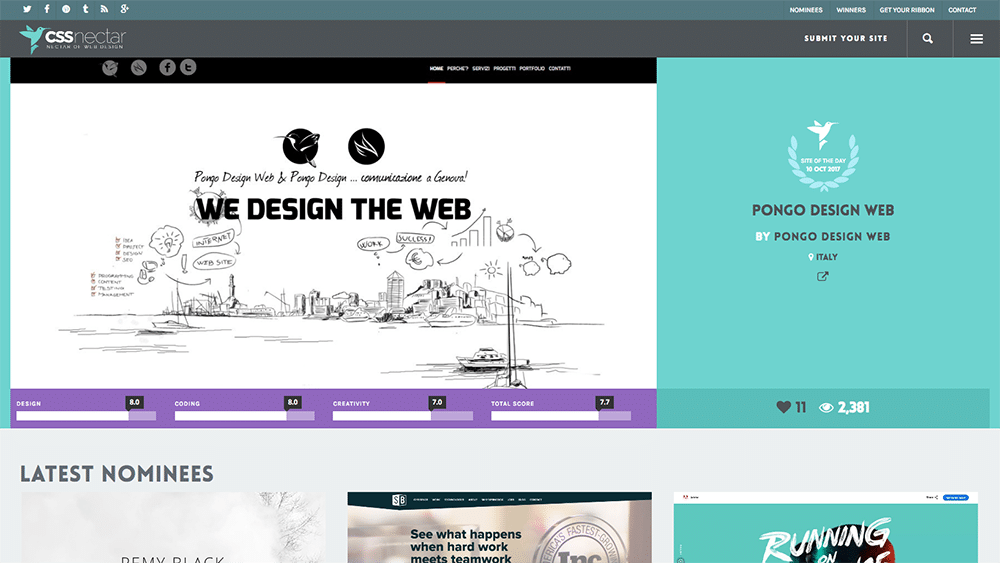Necessary Tips for Crafting High-Impact Internet Site Styles
In the world of digital advertising and marketing, the design of a web site serves as a crucial touchpoint for engaging potential clients. To develop high-impact website designs, one have to take into consideration important components such as audience understanding, user experience, and aesthetic pecking order. Each of these components plays an essential role in not just bring in visitors but also in promoting significant interactions. The interaction between these aspects can be intricate and nuanced, raising the question of just how to properly stabilize them to achieve ideal outcomes. Checking out these techniques can cause transformative results for your on-line existence.
Understand Your Target Market

To successfully understand your audience, start by performing group analyses to gather information on age, sex, area, and rate of interests - website design. This details functions as a structure for creating customer identities, which stand for the vital qualities of your target market. These characters overview decision-making in design aspects and web content strategy, ensuring positioning with user assumptions
Additionally, examining individual habits through tools like Google Analytics can expose exactly how site visitors connect with your site. Metrics such as bounce prices and time on page can highlight areas that require improvement or modification. Customer studies and feedback likewise give very useful understandings right into choices and discomfort factors.
Eventually, a deep understanding of your target market is not merely useful however essential. It empowers designers to produce even more appropriate, appealing, and functional sites that foster a positive customer experience and drive preferred end results.
Prioritize Customer Experience
When designing a web site, prioritizing individual experience (UX) is extremely important to attaining both customer contentment and organization goals. A well-crafted UX makes sure that site visitors can navigate the site effortlessly, discover the info they require, and involve with material properly. To complete this, it is critical to take on a user-centered style technique that entails understanding customer requires, preferences, and actions.
Begin by conducting extensive research, including customer studies and use screening, to collect insights into how users connect with your site. This information must educate layout choices, making certain that attributes and designs straighten with user assumptions. Streamlined navigating is important; site visitors need to be able to locate information quickly without unneeded clicks or complication.
Furthermore, think about the filling speed of your web site. A slow-loading website can cause high bounce rates, negatively impacting user experience. Maximize manuscripts and pictures to boost efficiency.
Finally, make sure that your internet site is available to all individuals, including those with handicaps. Complying with availability standards not only widens your target market yet additionally cultivates inclusivity. By focusing on UX, you lay the structure for an effective website that fulfills both user needs and organization objectives.
Embrace Visual Power Structure
A well-structured visual hierarchy plays a significant role in enhancing individual experience by directing site visitors' focus to the most important elements of a website (website design). By tactically setting up material, designers can create a clear path for individuals to adhere to, guaranteeing they involve with important info efficiently
To execute visual power structure, start by using dimension and scale. Bigger aspects see post naturally attract the eye, making them excellent for headings or calls to activity. Enhance this with contrasting shades that highlight key locations, as vibrant tones can produce centerpieces that catch focus.
Additionally, the positioning of components on the web page is vital. Leading the audience's gaze with the design can be achieved by positioning crucial information at the top or in the facility, where users usually begin their visual trip. Incorporating whitespace around components can additionally improve clearness, making it simpler for individuals to refine info without feeling overwhelmed.
Lastly, utilizing typography successfully adds to aesthetic hierarchy. Different font style sizes, weights, and designs can represent value, directing individuals with the content flawlessly. By accepting these concepts, designers can create an user-friendly experience that promotes involvement and encourages customers to check out better.
Enhance for Mobile
Mobile optimization is vital in today's digital landscape, as a considerable part of web traffic originates from mobile tools. To ensure a smooth individual experience, internet sites must be created with mobile customers in mind. This includes using responsive internet style techniques that adapt the layout, photos, and message to fit different screen sizes while preserving performance and visual appeals.

Touch targets, such as switches and web additional hints links, have to be suitably sized, ensuring they are conveniently tappable without errors. Ensure that forms are mobile-friendly by minimizing input areas and utilizing dropdowns where relevant, enhancing the individual experience.
Finally, test your website throughout various mobile devices and web browsers to recognize any issues that may affect usability. By prioritizing mobile optimization, you not just enhance individual complete satisfaction however additionally positively impact your site's online search engine ranking, hence attracting even more visitors and enhancing general involvement.
Implement Solid Branding
A distinct brand name not only differentiates you from competitors but additionally cultivates count on and commitment amongst your target market. This identity should be reflected consistently throughout all electronic touchpoints, including your web site, social media, and email communications.
Aesthetic elements such as logos, color pattern, and typography play an important duty in branding. Select a shade combination that reverberates with your target market and reflects your brand name personality. Ensure that your logo is versatile and prominently shown on your website, improving brand recognition.
Material is similarly essential; your intonation must line up with your brand identity, whether it's expert, pleasant, or reliable. Engaging narration can further enhance your brand name, creating an emotional connection with individuals.
Verdict
To conclude, crafting high-impact site layouts necessitates additional reading a multifaceted technique that incorporates comprehending the target market, prioritizing user experience, and accepting visual hierarchy. Optimization for mobile devices remains crucial, along with the application of strong branding techniques. By incorporating these components, web sites can efficiently engage individuals, help with seamless navigating, and foster psychological links that improve brand name identity. Eventually, adherence to these principles adds to the production of efficient and compelling electronic experiences that reverberate with target audiences.
To create high-impact internet site layouts, one need to consider important components such as audience understanding, individual experience, and visual pecking order.When designing a site, prioritizing customer experience (UX) is vital to achieving both customer contentment and business objectives.Begin by conducting comprehensive research, including user studies and functionality screening, to collect understandings right into just how users interact with your website. To ensure a seamless user experience, sites have to be developed with mobile individuals in mind.In verdict, crafting high-impact website layouts demands a multifaceted approach that encompasses comprehending the audience, focusing on customer experience, and welcoming visual power structure.
Comments on “How Website Design Can Contribute to Building a Successful Online Brand”